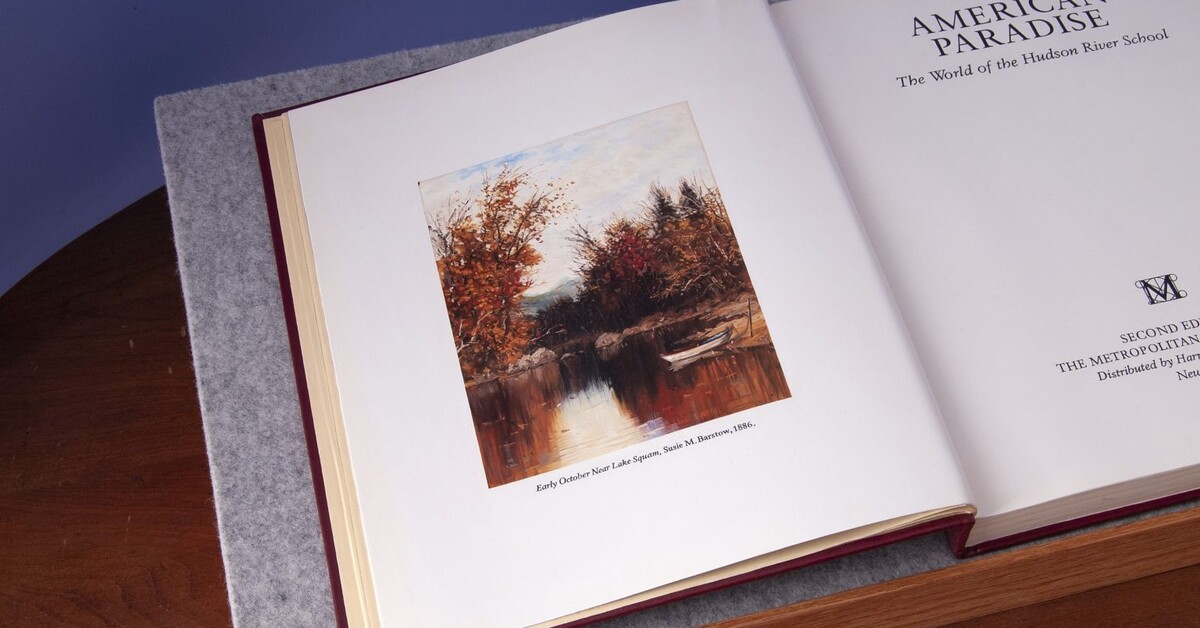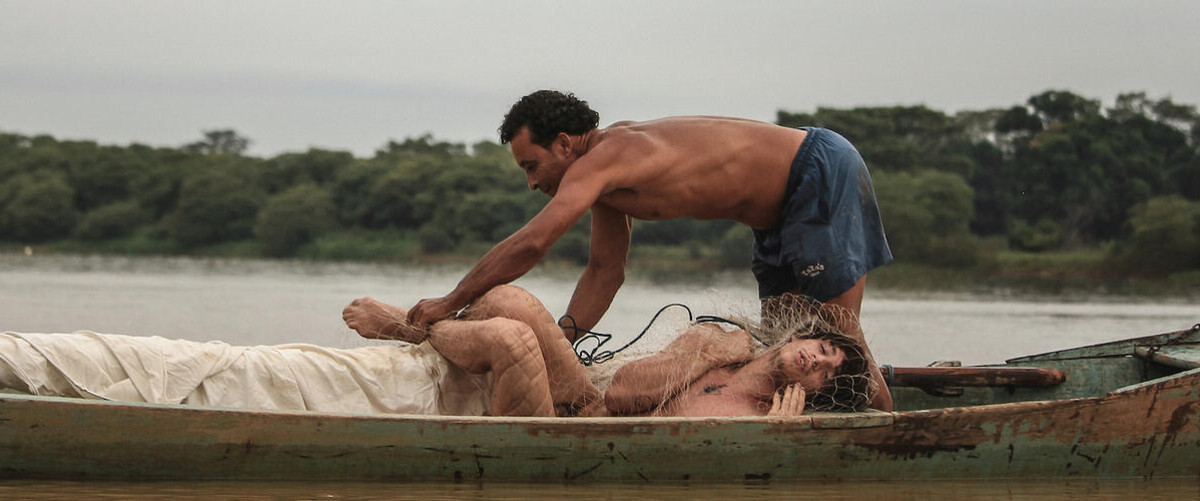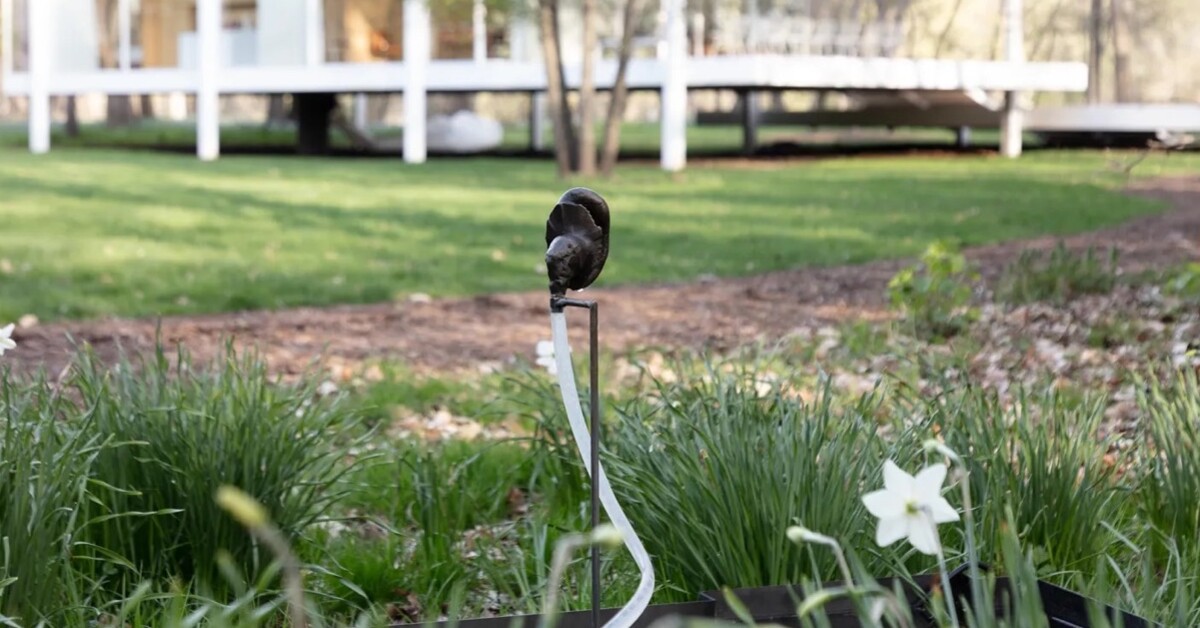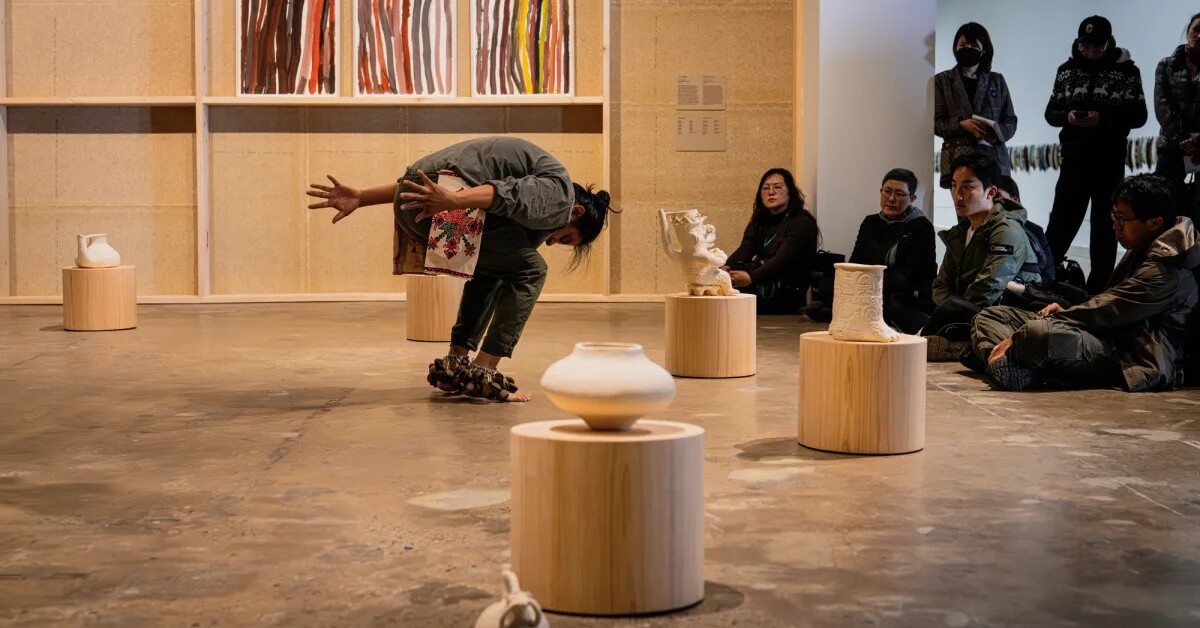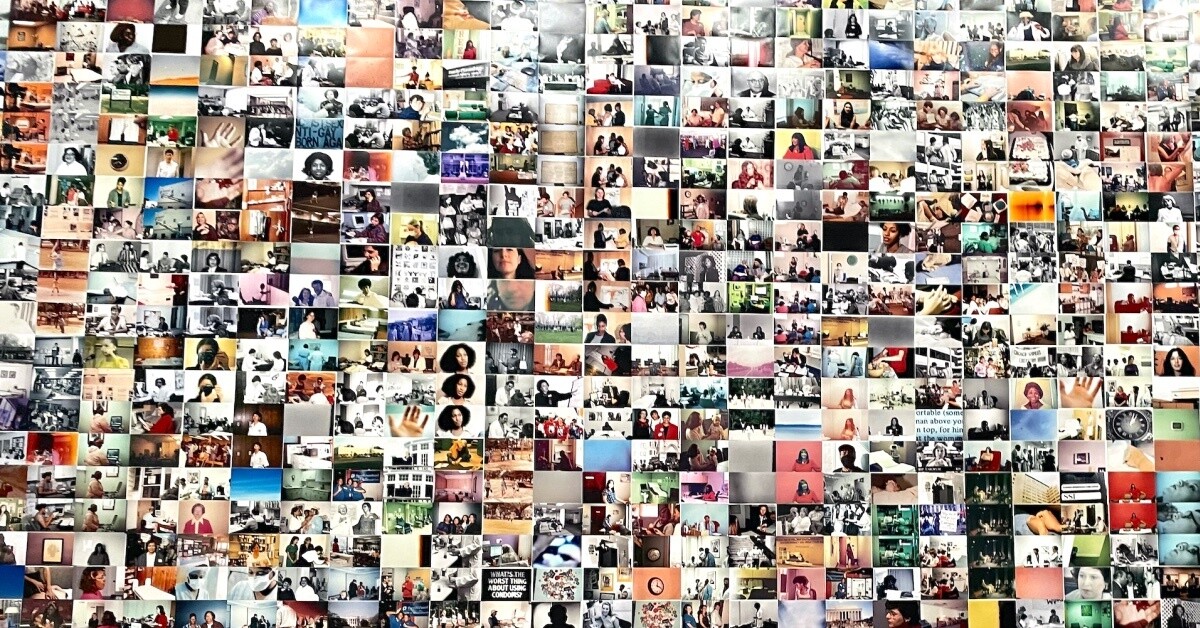Ancestral suffering, present victories: Noé Martínez’s ‘The Body Remembers.’
The Justice / Mar 19, 2024 / by Mikey Terrenzi / Go to Original
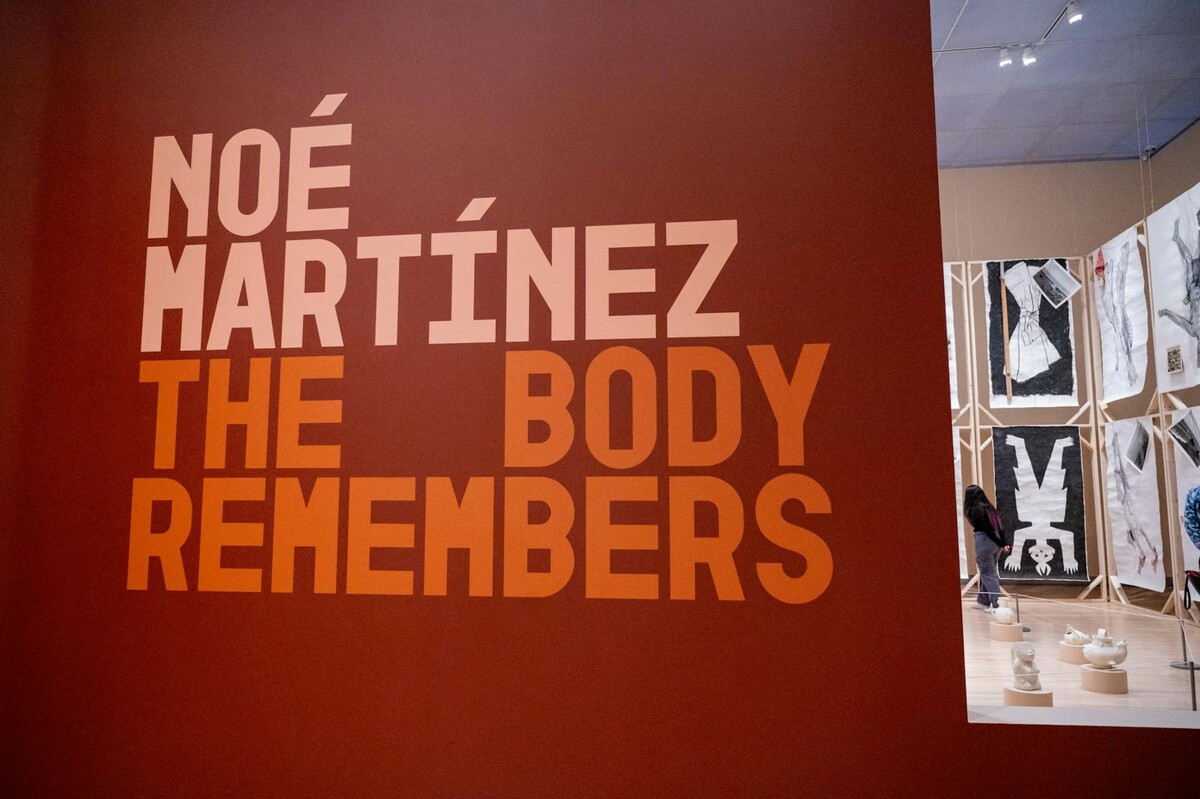
By Natalie Bracken
How do we represent our suffering? Is it individual, communal, ritual or ancestral? Noé Martínez aims to tackle these feelings through the exhibition “The Body Remembers.” This exhibition opened on March 13 at the Rose Art Museum.
Martínez, an Indigenous Mexican artist of Huastec heritage, uses his art to communicate the pain, the traumas and the present state of his people in Mexico. Representing his people through a colonial lens, the exhibition forces a silence in the room. His work takes inspiration from multiple different styles and mediums, reaching into poetry and film to create a truly unique space. These works force an uncomforting interaction between audience and artwork. Breaking from the traditional gallery installation, this monumental and somewhat architectural exhibition is thought-provoking and inspiring.
On display at the Rose Art Museum, the exhibition has three multimedia installations in a truly awe-inspiring curation. It is first necessary to walk around the main wall, where there is a cutout that frames the exhibition, giving a glimpse of the work. This frame seems to separate the viewer from the art, positioning us as bystanders to the suffering of the Huastec community. Feeling separated in this way makes the viewer somewhat complicit, a voyeur to the colonial past. But experiencing this exhibition forces us to acknowledge the continual pain of colonization throughout history.
Entering into the main gallery, the first thing you notice is an obstruction. A barrier of 12 white ceramic figurines, pots and sculptures encircle and confront the viewer. The figures show the cardinal directions and are aligned with them in exhibition, a call to Martínez’s ancestral religion. These anthropomorphized ceramics seem to hold or possess a presence in the room. At the center of the compass is a hanging mass of ceramic figurines and rope with the faces peeking through painted a terracotta red. Strangled and surrounded, the presence they hold is intense, inspiring and harrowing. Each figure, in a serene harmonious stillness, attacks the very existence of the viewer on the Earth where they stand. This piece is called “My body is a cemetery and my path is a memorial.” Martínez asks the viewer to consider the idea that his heritage, his own flesh, is a past filled with death and honor. A cemetery is not a place of forgotten people. Martínez himself is memorializing them, remembering his ancestors, their place in his path, and in his future. The figures form their own path as well, guiding the troves of ambulating viewers. Our craning necks stretch upwards, a sea of chins point to the sky in awe of the walls of portraits lining frames.
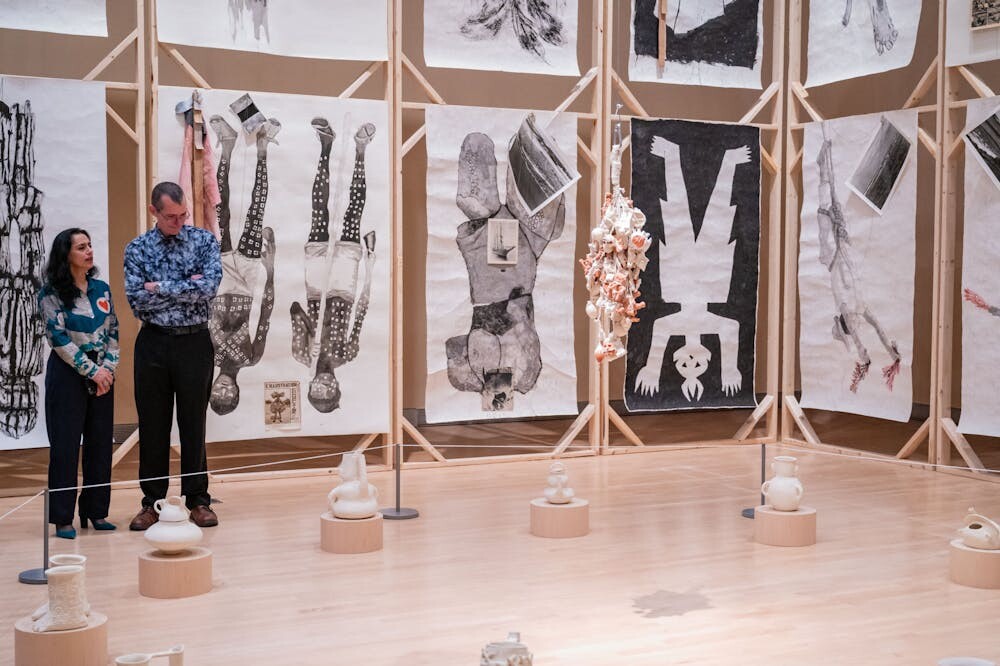
ARTWORK: Martínez’s work, “My body is a cemetery and my path is a memorial” enthralls viewers.
Creating dimly lit hallways and passages, wooden frames and portraits stand monumentally in the back of the exhibition. The walls of portraits are a part of “The Motherland of images,” an installation of collaged works detailing the slave trade of not just the Huastec people, but African people as well. These life size collages take time and space to appreciate. In many different styles of representation, bodies and body parts are drawn on paper. Photographs of ships, newspapers and advertisements are attached by chains throughout the installation. History weighs heavy as you are suddenly forced, by the ceramic installation, to be face to face with a bound body. Towering over the viewer is another wall of portraits, reaching astronomical heights. The magnitude of these works feels like an overwhelming shadow, pressing hard on the shoulders of the audience. Martínez’s work encapsulates the colonial trade and horrors of history in this series. As you move through the portraits, words on the backsides of the paper peek through. Walking behind these walls presents another piece of “The Motherland of images” poetry. In both Nahuatl, the native language of Martínez, and Spanish, poetry is written on the backside of each portrait. Martínez works with the cultural importance and heritage of language itself to describe the necessity of perseverance in the face of oppression. As the dimly lit alley between the wall and the portrait encloses around you, the illuminated poetry reflects the survival of the Nahuatl language and therefore the Huastec people.
The final part of the exhibition is a film, a brief reenactment of Huastec ritual, in which a contorted camera angle films people in rhythm, dancing and moving. The movement of the actors throughout this film, titled “The history of the roads,” reflects the portraiture seen in the gallery. The actors in the film move through a dimly lit room, ambulating together in rhythm. They hold chains seen in the colleges and their figures mimic the position of the portraits. “The history of the roads” highlights the communal trauma as a result of colonial exploitation. It is not a singular person performing the ritual, but a diverse and varied group, related back to one another across generations to the colonial history of the Americas.
This exhibition has left me with a variety of thoughts, but none are negative. Martínez’s works create a dynamic, discomforting, detailed and devoted space to the history of his people. This kind of space is challenging; it forces the audience to confront their own individualism and their position. Are you the voyeur, watching in through the walls? Are you confronting the ceramic compass, questioning their position too? Are you taking your phone out and photographing the bodies in question? Are you contributing to their suffering?
All of these questions floated through my mind as I walked through one of the most captivating exhibitions I have seen at the Rose. As you visit this exhibition, which I highly recommend and encourage, it truly is necessary to allow your discomfort to settle. Allow it to linger in yourself. The space is disconcerting, but also a representation of survival, an important reminder of the enduring lives of the Huastec people. The body is not only a reminder of all ancestral traumas, but a personal reminder of the victory over adversity.
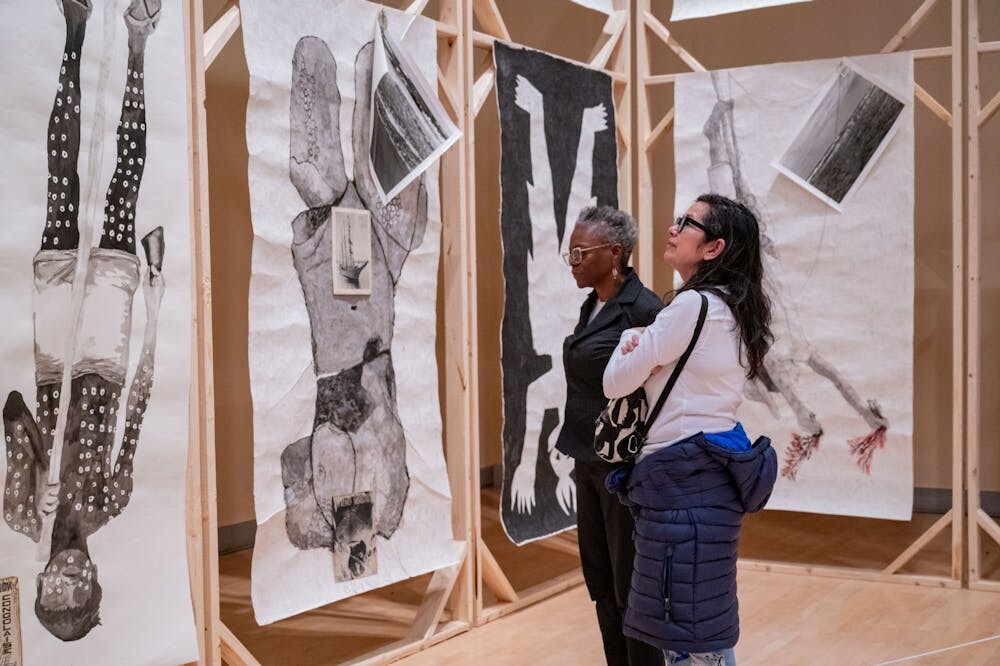
AMBLING AUDIENCE: People observe Martínez’s “The Motherland of Images” as they traverse the gallery.

